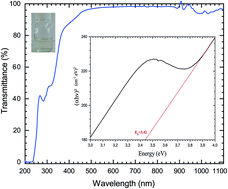Synthesis of ZnO sol–gel thin-films CMOS-Compatible
Abstract
Zinc oxide (ZnO) is a II–VI group semiconductor with a wide direct bandgap and is an important material for various fields of industry and high-technological applications. The effects of thickness, annealing process in N2 and air, optical properties, and morphology of ZnO thin-films are studied. A low-cost sol–gel spin-coating technique is used in this study for the simple synthesis of eco-friendly ZnO multilayer films deposited on (100)-oriented silicon substrates ranging from 150 to 600 nm by adjusting the spin coating rate. The ZnO sol–gel thin-films using precursor solutions of molarity 0.75 M exhibit an average optical transparency above 98%, with an optical band gap energy of 3.42 eV. The c-axis (002) orientation of the ZnO thin-films annealed at 400 °C were mainly influenced by the thickness of the multilayer, which is of interest for piezoelectric applications. These results demonstrate that a low-temperature method can be used to produce an eco-friendly, cost-effective ZnO sol–gel that is compatible with a complementary metal-oxide-semiconductor (CMOS) and integrated-circuits (IC).



 Please wait while we load your content...
Please wait while we load your content...